How to clean your Samsung washer

Cleaning your Samsung washer is essential to prevent odors, mold buildup, and maintain optimal performance. In this guide, we'll walk you through the steps to clean your Samsung front and top load washers, including addressing surface spots, cleaning the pump filter (for front load washers), and running a Self Clean or Pure Cycle.
Note: The information provided applies to washers sold in Canada. Screens and settings may vary for washing machines sold in other countries.
While we'll cover various cleaning methods below, here are a couple of tips to keep your washer fresh between routine and monthly cleanings:
If you typically use cold water for washing, occasionally run a cycle with warm or hot water to reduce soil and detergent buildup.
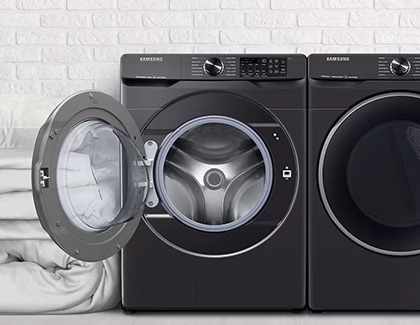
Leave the washer's door and detergent drawer open to allow them to air out and prevent moisture from lingering, which can lead to mold and mildew. If mold or mildew has already formed, read our guide for troubleshooting.
Regularly cleaning and drying your washer's surface is crucial to prevent residual cleaner or water from causing blemishes on the washer's door.

The Self Clean (also known as Pure Cycle or Self Clean+) cycle is designed to prevent mold by cleaning areas of the tub where moisture and detergent residue may accumulate. It takes approximately 1 hour for a top load washer and 4 hours for a front load washer. Keep in mind that once the cycle starts, the washer's control panel will show the estimated remaining time.
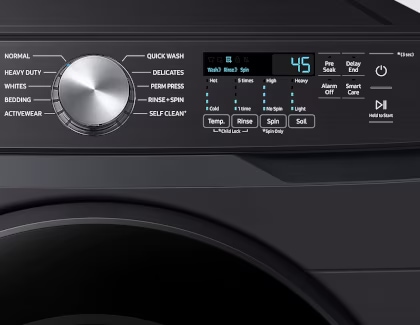
Note: No additional cleaner is required when running Self Clean. However, if you already have an existing mold smell, consider using bleach (pour it into the detergent compartment) as recommended in our guide.
If you notice suds or residue during the Self Clean cycle, run another Self Clean cycle. The Self Clean reminder LED will appear after a certain number of washes (20 for top load, 40 for front load). While immediate cleaning isn't necessary, it's advisable to run it as soon as possible. It's also a good practice to run Self Clean at least once a month if you don't use your washer frequently.
While Self Clean is the preferred method for cleaning your washer's interior, some models may not have this feature. In such cases, you can use any washing machine cleaner. Follow the specific instructions provided with the cleaner you choose, as they may vary between products.


Note: Product images are for illustrative purposes only, and Samsung does not endorse any particular product.
Routine maintenance helps prevent odors from happening in the first place, but if you already have odors in your washer, you may need a little extra oomph. Our guide for dealing with a washer that smells bad provides steps tailored to this issue.
Using too much detergent can gunk up the detergent drawer, causing less to reach your clothes. It can even contribute to odors and other issues with your washer. You can easily keep the detergent drawer clean by wiping it dry after every wash session. You can also deep clean it at least once per month just to be thorough.
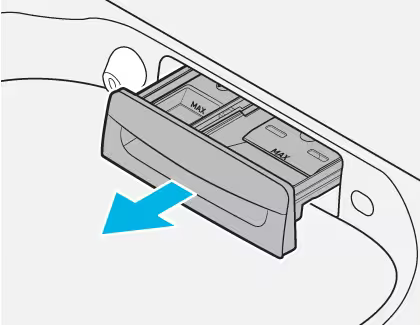
• On a front load washer, push in on both ends of the drawer simultaneously and then pull it out.
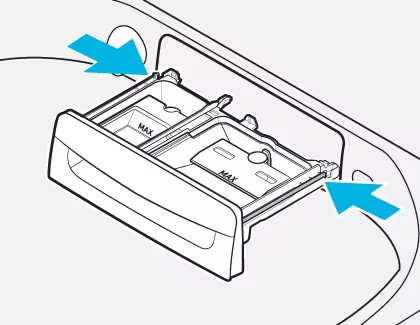
• On a top load washer, pull out the drawer and tip it up to remove it.
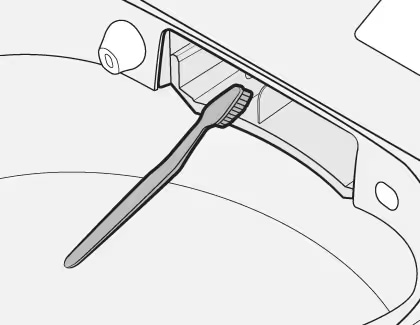
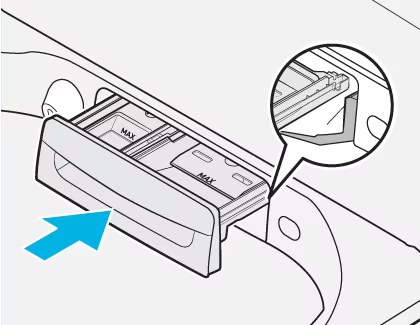
This model comes with an auto dispenser detergent drawer, which should be wiped clean after every wash, and deep cleaned once per month. Doing so will prevent detergent build up, odors, and other issues with your washer.

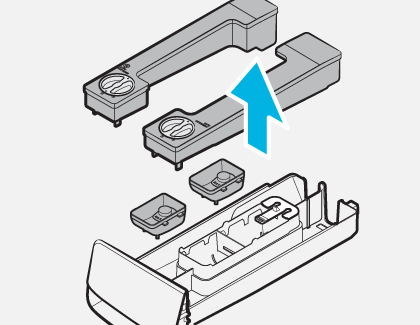

Note: Ensure the drawer recess is completely dry before reinserting the drawer.
The pump filter on your front load washer, also called the debris filter, helps filter lint and other debris from entering the washer's drain system (but Top load washers do not have a pump filter). We recommend cleaning the pump filter at least once a month or approximately 40 washes, whichever is more frequent. Keeping the pump filter clean will help prevent odors, reduce the likelihood of mold and mildew, and ensure your washer drains properly.
Caution: If you recently ran a hot cycle (Self Clean, Pure Cycle, or Sanitize), the water in the washer will be very hot. Allow one hour for it to cool to avoid injury.

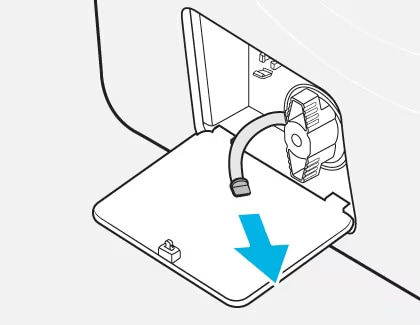
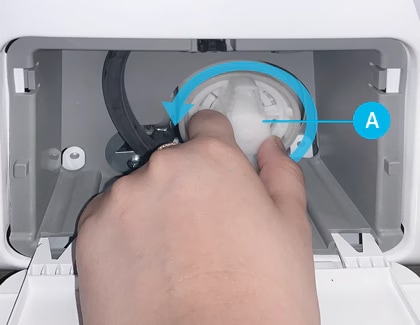
Note: On some Samsung washers, the washer pump filter (A) is similar to the cap on a medicine bottle. Push in and twist to remove.
Note: If these steps don't match with your front load washing machine, please refer to your user manual.
Thank you for your feedback!
Please answer all questions.
The coding for Contact US > Call > View more function. And this text is only displayed on the editor page, please do not delet this component from Support Home. Thank you
